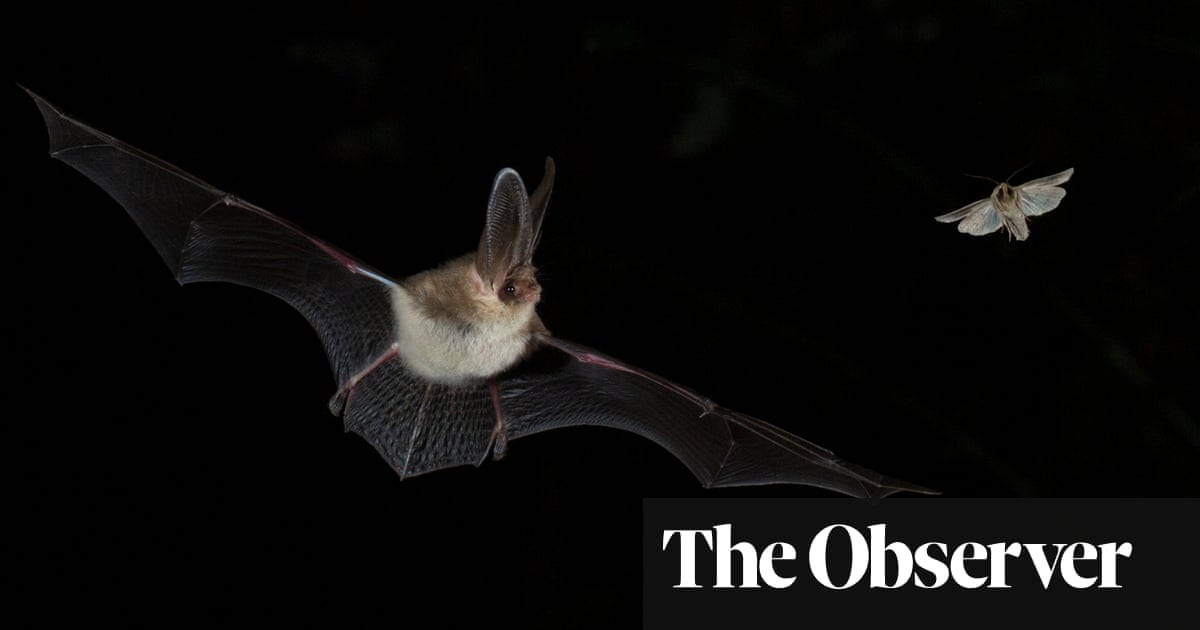Conservation groups across England are seeing more malnourished bats, as wildlife experts warn the washout summer is driving down the insects, butterflies and moths they feed on.
Groups across Cambridgeshire, Norfolk, Worcestershire, Essex and South Lancashire said they are seeing an increase in the number of “starving” or “underweight” bats, often juveniles, who need to be rescued and cared for by volunteers. In some places, they are seeing fewer bats than they usually do in the summer.
There has been a decline in UK insect populations for decades, linked to the climate emergency and widespread use of pesticides. Some believe it has been exacerbated by this year’s record wet weather.
“Any decline in insects can have a serious negative impact for all of the UK’s 17 breeding bat species since they all feed on insects,” said Dr Joe Nunez-Mino, spokesperson for the Bat Conservation Trust, which runs the National Bat Helpline and refers serious rescue cases to local volunteers.
Last year, the trust found that the UK populations of two species – the brown long-eared bat and the horseshoe bat – had declined by more than 10% over the past five years. It is running a long-term study to understand the impact of the climate emergency on bat species.
Bats in the UK are threatened by habitat destruction, increasing use of artificial light and building developments. Nunez-Mino said all these factors affect bats and the insects they feed on.
People can help the charity track bat populations through its annual National Bat Monitoring Project this summer.
The charity Butterfly Conservation is reporting a “noticeable lack” of butterflies and moths this year. Dr Dan Hoare, director of conservation said: “This is likely to be because of the wet spring and now the colder than normal temperatures. Butterflies and moths need some warmth and dry conditions to be able to fly around and mate – if the weather doesn’t allow them to do this, there will be fewer opportunities to breed.”
The charity is urging everyone to participate in its annual Big Butterfly Count before 4 August, another leading citizen science project that helps ascertain the health of the UK populations. As indicator species, the presence – or absence – of butterflies and moths shows how healthy the wider environment and ecosystem are.
In the east of England, experts have been called on to rescue malnourished bats from across Cambridgeshire, Bedfordshire, Northamptonshire, Lincolnshire, Essex and Suffolk this summer.
“Some of our carers are looking after 20 bats,” said Jonathan Durward, ecologist and treasurer of Cambridgeshire Bat Group, adding that most are juveniles and pups who are “incredibly” underweight: “They’re all starving.”
He thinks many bats, particularly juveniles, are travelling farther and flying for longer to find food. As furry mammals, bats must warm up after getting cold and wet, expending vital energy that – in June and July – lactating mothers would normally use to suckle their pups.
“It’s been extremely wet, cold and windy around here this summer,” said Durward. “But if they don’t go out in the cold and the rain, they’re losing a night’s food.”
after newsletter promotion
Many of the juvenile bats they are rescuing weigh 50% of what ecologists would expect to see, Durward said.
“They are a lot thinner and lighter than they have been in previous years. Almost all are in poor condition, not just underweight.” He added that the less bats eat, the less healthy and more susceptible they may become to parasitic infections.
At East Winch Wildlife Hospital in Norfolk, vets have been caring for almost twice as many bats as usual. “We’ve had a high number of juveniles, compared to last year. It does make you wonder whether the adults are struggling to find food and therefore struggling to produce milk for the babies,” said the deputy centre manager, Alice Puchalka.
Twenty miles away, in Pensthorpe natural park, reserve manager Richard Spowage said wardens have observed noticeably fewer bats this summer than usual.
“Anecdotally, we’re seeing fewer bats in the evening – but also, similarly, we’re not seeing the butterflies and moths that we would expect. They’ve not been emerging in the numbers they should be and they’ve only got a limited time to breed and lay eggs.”
Fewer insects reproducing this year is likely to mean fewer insects next year, Spowage said. “It’s a downward spiral.”
Source link
